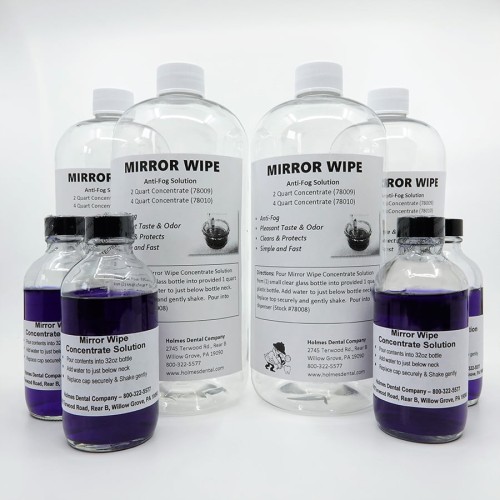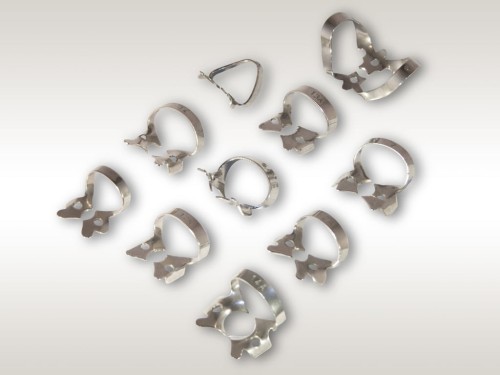
Most Popular
 Importance of Anti-Fog Solutions in Dental Care and Dentistry
Importance of Anti-Fog Solutions in Dental Care and Dentistry
Dentistry is a broad term, where minor tools, equipment range, ...
 Rubber Dam Clamp Placement and Its Uses
Rubber Dam Clamp Placement and Its Uses
Rubber dam clamp placement is a crucial technique in dentistry, ...
How Denture Gum Abrasion Affects Oral Health: Exploring the Impact
Denture gum abrasion, a common issue among denture wearers, can ...



What are the best techniques for rubber dam clamp placement in dentistry?
The best techniques for rubber dam clamp placement in dentistry involve careful selection of the appropriate clamp size and shape for the tooth being treated, ensuring proper isolation and stability. Dentists should utilize a rubber dam punch to create precise holes for clamp placement, followed by gentle manipulation to secure the clamp without causing discomfort to the patient. Additionally, maintaining clear communication with the patient throughout the process can enhance effectiveness and reduce the likelihood of clamp slippage or discomfort.
What are the common mistakes to avoid during rubber dam clamp placement?
Common mistakes to avoid during rubber dam clamp placement include using the wrong size or type of clamp for the tooth being treated, inadequate isolation resulting in moisture contamination, and excessive force causing discomfort or damage to the soft tissues. Dentists should also be cautious of improper positioning of the clamp, which can lead to leakage and compromise the success of the procedure. Regular training and practice can help dental professionals avoid these mistakes and ensure successful clamp placement.
What is the importance of proper rubber dam clamp placement for dental procedures?
Proper rubber dam clamp placement is crucial for dental procedures as it provides effective isolation of the treatment area, preventing contamination from saliva and other fluids, improving visibility and access, and enhancing patient comfort. By isolating the tooth being treated, rubber dam placement creates a controlled environment for the dentist to work in, improving the accuracy and success of various procedures such as restorative work, endodontic treatment, and tooth whitening. Additionally, rubber dam placement promotes infection control and reduces the risk of postoperative complications, highlighting its importance in maintaining high standards of dental care.
What are the different types of rubber dam clamps used in dental practice and their placement methods?
In dental practice, various types of rubber dam clamps are used, each designed for specific teeth and clinical scenarios. Clamps may differ in size, shape, and design, catering to the diverse anatomical features of different teeth. Common types include winged clamps, wingless clamps, and pediatric clamps, each with unique placement methods to ensure secure and effective isolation. Dentists must familiarize themselves with the characteristics of each clamp type and their appropriate applications to achieve optimal results in dental procedures while minimizing patient discomfort and procedural complications.
What are the steps involved in precise rubber dam clamp placement for optimal isolation?
Precise rubber dam clamp placement is essential for achieving optimal isolation of the treatment area, ensuring clear visibility and access for the dentist while enhancing patient comfort. The steps involved in precise clamp placement include careful selection of the appropriate clamp size and type based on the tooth being treated, accurate hole punching using a rubber dam punch, and gentle manipulation to secure the clamp in place without causing discomfort to the patient. Attention to detail and proper technique are crucial for achieving successful isolation and optimal outcomes in dental procedures.
What is the purpose of dental rubber dam placement during procedures?
The purpose of dental rubber dam placement during procedures is to isolate the treatment area, providing a clean and dry operating field for the dentist while enhancing patient comfort and safety. By preventing contamination from saliva, blood, and other fluids, rubber dam placement reduces the risk of infection, improves visibility and access, and enhances the effectiveness of various dental procedures such as restorative work, root canal treatment, and tooth whitening. Additionally, rubber dam placement promotes patient relaxation by minimizing sensory stimuli and facilitating a controlled environment for the dentist to work in.
What are the benefits of using dental rubber dam placement in dentistry?
Using dental rubber dam placement in dentistry offers numerous benefits, including improved isolation of the treatment area, enhanced visibility and access for the dentist, and increased patient comfort and safety. By creating a barrier between the tooth being treated and the surrounding oral environment, rubber dam placement prevents contamination from saliva, blood, and other fluids, reducing the risk of infection and postoperative complications. Additionally, rubber dam placement facilitates the application of dental materials such as composite resin, sealants, and bleaching agents, improving the accuracy and longevity of various dental procedures while minimizing patient discomfort and procedural errors.
What are the steps involved in proper dental rubber dam placement?
Proper dental rubber dam placement involves several key steps to ensure effective isolation of the treatment area and optimal outcomes for the patient. These steps include selecting the appropriate size and type of rubber dam based on the tooth being treated, accurately punching holes in the dam to accommodate the teeth and clamp placement, and gently securing the dam in place without causing discomfort to the patient. Attention to detail and proper technique are essential for achieving successful rubber dam placement, enhancing visibility and access for the dentist while minimizing the risk of contamination and procedural complications.
What are the different types of dental rubber dam placement techniques?
Different types of dental rubber dam placement techniques are employed in dentistry, each tailored to specific clinical scenarios and patient needs. Common techniques include the traditional full-mouth isolation technique, where the rubber dam is applied to all teeth in the arch, and the quadrant or localized isolation technique, where the dam is applied only to the teeth being treated. Additionally, variations such as the split-dam technique and the modified rubber dam technique may be used to accommodate unique anatomical features or treatment requirements. Dentists must carefully evaluate each case to determine the most appropriate rubber dam placement technique for optimal outcomes.
What are the materials required for effective dental rubber dam placement?
Effective dental rubber dam placement requires the use of specific materials and tools to achieve proper isolation of the treatment area and ensure patient comfort and safety. Essential materials for rubber dam placement include latex or latex-free rubber dams, rubber dam clamps, rubber dam punches, floss ligatures, and dental dam frames or holders. Dentists may also utilize accessories such as rubber dam napkins, lubricants, and cheek retractors to enhance the effectiveness and efficiency of rubber dam placement. By selecting high-quality materials and employing proper technique, dental professionals can optimize outcomes and enhance the patient experience during various dental procedures